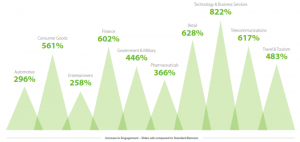Thought leadership is a central principle in effective public relations. By becoming a thought leader, you can shepherd your industry’s overall direction in a collaborative PR environment, or take the lead in an innovative PR environment.
What does it mean to be a thought leader, and how do you become one? Recall that our definition of thought leadership is simple:

A thought leader’s thinking changes how everyone else leads.
If you want to be that thought leader, you must be creating the thinking that enables others to lead better. To do that, you have to be able to see where your industry is going, rather than where it is and where it’s been. As hockey expert Wayne Gretzky said, “I skate to where the puck is going to be, not where it has been.”
One of the simplest ways to understand where things are going is to use listening and monitoring tools to gauge what people are talking about. For example, let’s look at the simple phrase “social media marketing”. What are the words and phrases associated with this term? Using nearly any major social/digital listening tool, you’ll probably come up with a list that resembles:
This list gives you a single snapshot in time of words used and the frequencies of their use. Take enough snapshots and you’ve got a movie; take enough data snapshots and you’ve got the makings of trend analysis. Use the spreadsheet or data analysis software of your choice to make a rank chart over time:
What we see in the chart above are some terms that have accelerated their discussion volume considerably in the last month, such as terms around social media tools, white papers, and Twitter. These are the keys, the trends that are difficult to see in the raw data itself. From these discussion terms, we’d dig into the context of each to better understand why.
For example, many of the discussions featuring Twitter revolve around identifying real users versus automated profiles, and how to use the service more effectively for traffic generation. Knowing that the topic has trended upwards so strongly in the last month, a thought leader would naturally create more content on that topic and related topics.
If people are talking about traffic generation using Twitter, it’s logical and sensible to test whether they’re also talking about traffic generation on Pinterest, Instagram, Facebook, etc. Instead of waiting for conversation on those topics, proactively create thinking and content so you can take the lead.
Do this process for your industry and see what comes up. This process can also be repeated/extended for nearly any large body of text as long as you’re able to quantify the number of times a given word or phrase appears, so even if your industry isn’t active on social media (or all discussion happens in non-public forums), you can use it. Use it on search terms, use it on email newsletters, use it on trade publications – as long as you can gather the text, you can analyze it.
The first step to becoming a thought leader is to understand what thinking is needed in order to lead.
Business & Finance Articles on Business 2 Community
(126)








